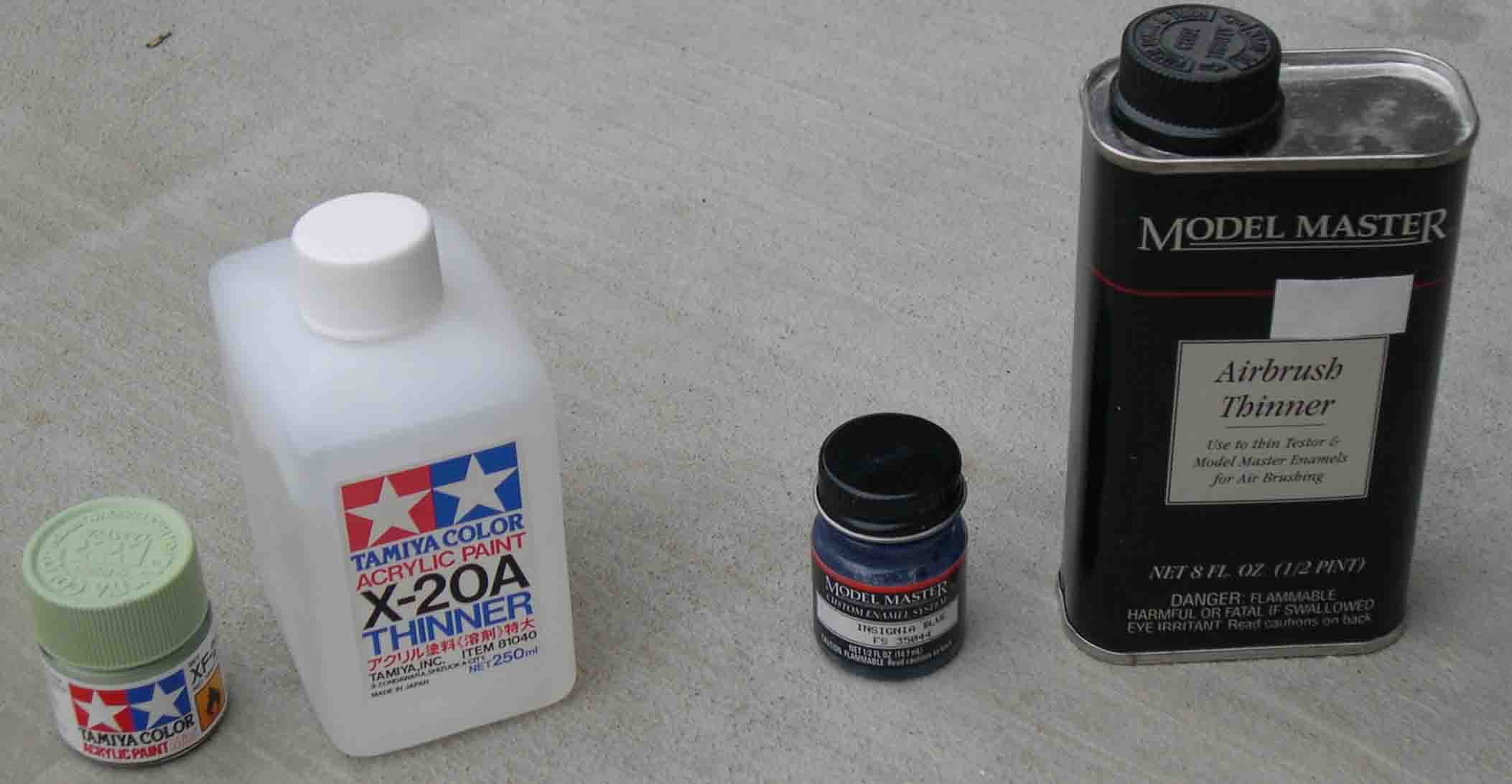Airbrush Paints
There are several types of paint suitable for your airbrush, each with its own benefits. Dope was at one time the standard for model airplanes, but other paints have emerged. Some examples are: enamel, acrylic and latex.
Enamel gives a great finish but is tricky to cleanup and dries slowly. My favorite is water-based acrylic: dries quickly, easy to cleanup, and does not attack foam or wood. Acrylics tend to dry flat, so gloss finishes are best achieved with a separate clear coat.

Left to right: Acrylic Paint, Acrylic Thinner, Enamel Paint, Enamel Thinner
The paint thinner is another component to getting a great airbrushed finish. Most paints will need to be thinned before airbrushing. It's best to use the manufacturer's recommended thinner for this. The chemistry will match the paint exactly, and has been tested thoroughly. There are "homebrew" thinners that you can make to save a few dollars, but it's generally not worth it: it takes time to find the right concoction to make the paint flow right without drying too fast.
However, you can use the homebrews for cleaning the airbrush, either between color coats or after you're done airbrushing for the day. In this case, the paint consistency is not critical; you are just trying to dissolve it away. For acrylic paints, isopropyl alcohol (from the drugstore) mixed with water makes a great cleanup-thinner. I use this between colors. For final cleanup after acrylics, I like to soak the airbrush parts in a 50:50 Windex: water mixture. More on cleaning later.

Right: thinned alcohol for cleaning acrylic paints. Left: Future floor wax, for gloss coats over acrylic.
Another good solvent to know about is Future Floor Wax. Yes, Floor Wax. It's a liquid acrylic designed for floors. It works great as a gloss coat, and can be airbrushed straight from the bottle without thinning.

